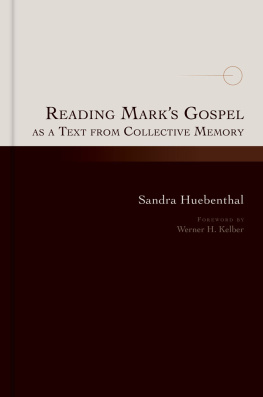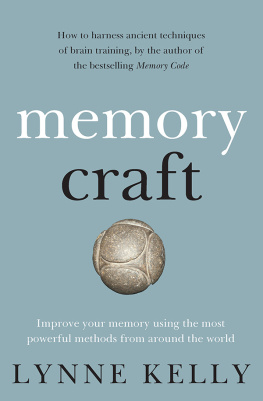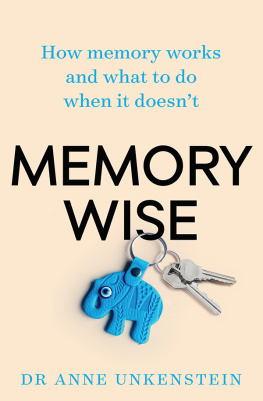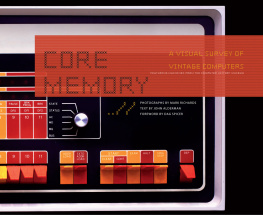The Medieval Craft of Memory
MATERIAL TEXTS
Series Editors
| Roger Chartier | Anthony Grafton |
| Joan DeJean | Janice Radway |
| Joseph Farrell | Peter Stallybrass |
A complete list of books in the series is available from the publisher.
The Medieval Craft of Memory
An Anthology of Texts and Pictures
Edited by
MARY CARRUTHERS AND
JAN M. ZIOLKOWSKI
PENN
University of Pennsylvania Press
Philadelphia
Publication of this book was aided by a grant from the Abraham and Rebecca Stein Faculty Publication Fund of New York University, Department of English
Copyright 2002 University of Pennsylvania Press All rights reserved
Printed in the United States of America on acid-free paper
10 9 8 7 6 5 4 3 2 1
First paperback edition 2004
Published by
University of Pennsylvania Press
Philadelphia, Pennsylvania 191044011
Library of Congress Cataloging-in-Publication Data
The medieval craft of memory : an anthology of texts and pictures / edited by Mary Carruthers and Jan M. Ziolkowski.
ISBN 0-8122-3676-9 (cloth : alk. paper) ISBN 0-8122-1881-7 (pbk. : alk. paper) p. cm.
Includes bibliographical references and index.
I. Mnemonics. I. Carruthers, Mary. II. Ziolkowski, Jan M., 1956. III. Series.
BF385.M43 2002
153.120902dc2I 2002020332
Contents
GENERAL INTRODUCTION
Mary Carruthers and Jan M. Ziolkowski
This anthology is devoted to the methods of a craft that seems to many people now not just antiquated but wrongheadedhow can our own memory be thought of as the product of a craft? And even more to the point, why should it be? In one common meaning of the word, memory specifically connotes storage, a treasure house both of experiences and of facts. We can think of our memories as being like valuables in a bank vault, just sitting in our brains, collecting dust and grime, perhaps (in a poorly made and tended vault) suffering depredations from rats and air pollution, until oblivion overtakes them. This is a curious intellectual model, for it suggests that our memories are essentially passive impressions of experiences we have had that can be taken out whole and unchanged whenever we need them. The notion that in re-collecting we actually make (and remake) our memories is regarded as somehow shameful, an admission that memory, like art and poetry, can tell lies.
Yet it is also true that to make use of memoriesindeed to know they are there in our minds at allwe must recall them to our active awareness, our knowing. Re-collection is not passive, but rather an activity involving human will and thought; it is often defined as a form of reasoning. One may conveniently think of this activity in spatial terms, as if memories have been stored in a variety of places and must be called together in a common place where we can become aware of them, where we can see them again and know them in the present. (Contemporary imaging of the brain activities involved in thought and recollection suggests that a spatial model may indeed reflect at some level what actually happens in the neurophysiology of human thought, though these techniques and analyses are still too unrefined to demonstrate fully to what degree this model is neurologically true.) In the locational model, stored memories are the materials of cognition, and the act of knowing begins (though it does not always end there) with the activities of finding and collecting their images from within ones mind.
Ancient and medieval writers on memory recognized, as we now do, the dual aspects of storage and recollection involved in remembering. Their commonest model for human memory likened it to a tablet or a parchment page, upon which a person writes. Re-collection was essentially a task of composition, literally bringing together matters found in the various places where they are stored to be reassembled in a new place. The assumption that human memories are made and remade is emphasized by the very words used to describe memory. Far from being passive and thus (at least possibly) neutral, memory-making was regarded as active; it was even a craft with techniques and tools, all designed to make an ethical, useful product.
The anthology we have brought together here collects some of the tools thought useful in the Middle Ages for memory-making. In it are both words and pictures, intimately and collaboratively related as devices for composing thoughts and memories. In the words can be found many picturesin the pictures many words. Moreover, it is not so apparent where one medium leaves off and the other begins, for many of the pictures are visual puns and pictures of words and many of the words are verbal paintings and drawings. In medieval learned cultures (all the material in this volume was produced in learned, even academic circles for purposes of reading and new composition), such a thorough mixing of media, especially the visual and the verbal, was commonplace. These two media not only referred importantly to other things both worldly and spiritual in naturethus having some sort of representational content, in our sense of the wordbut were considered equally to be basic tools for making thoughts. They thus had a fundamentally cognitive function, quite beside whatever content they might have. Indeed, many of the pictures in this book are deliberately nonrepresentational because it is their cognitive function that is emphasized.
Memoria was the name given in monasticism to this cognitive craft, which is an art of composing. The realization that composing depended on a well-furnished and securely available memory formed the basis of rhetorical education in antiquity, the elementary education in language arts that was the vehicle for forming excellence ( paideia) in both the person and the citizen. The founders of early monasticismmen like Augustine of Hippo, John Cassian, and Jeromewere formed by this ancient education and helped integrate its emphasis on invention, the composition of speech, with the habits of meditation on sacred texts that had been cultivated for centuries in Judaism and then among the desert fathers of early Christianity in Syria, Palestine, and Egypt. These early monks called their meditational practice mnm theou, memory of God, a goal achieved (though never completely) by a set of established practices, including particular postures, murmured pieces of memorized sacred text, and picturesboth mental and actualused to induce a prescribed way of emotionally marked-out stages toward divine theria, or seeing. While their meditation usually began with an exactly repeated segment of text, it was then supposed to expand in prayerful composition: as Hugh of St. Victor wrote in the early twelfth century, Meditation is a regular period of deliberate thought. [It] takes its start from reading but is not at all bound by the rules or precepts of lecture. For it delights to run freely through open space..., touching on now these, now those connections among
Thus, as an art, memory was most importantly associated in the Middle Ages with composition, not simply with retention. Medieval memoria took the inventive function of human memory for granted, and emphasized it. Indeed, those who practiced the crafts of memory used themas all crafts are usedto make new things: prayers, meditations, sermons, pictures, hymns, stories, and poems. Students of art and literature have long remarked on the intensely pictorial and affective qualities of these arts in the Middle Ages. Commonly this has been attributed to a need to accommodate the rustic qualities of their audiences. But a better reason for these characteristics may lie in the methods used to compose such works of artin which case their pictorial intensity must be understood not as a condescension to rude minds but as a creative device of meditation itself, the first task of an artist, whether of prayer or painting, planning his work. And in the lastingly powerful effect these images, this music, these stories have had over the centuries, the continuing creativity of the mental crafts used to make them receives its best proof.
Next page






